For decorating fun in the garden nothing beats a few punnets of annuals.
These plants only last a season, but they generously colour gardens, courtyards and balconies during their brief life.
Whether it’s a patchwork of blossom you want, or a ribbon of colour along a border, something to fill a gap, a dramatic hanging basket, a fringe of trim
in front of shrubs, or simply a pot brimming with flowers, annuals offer the answer
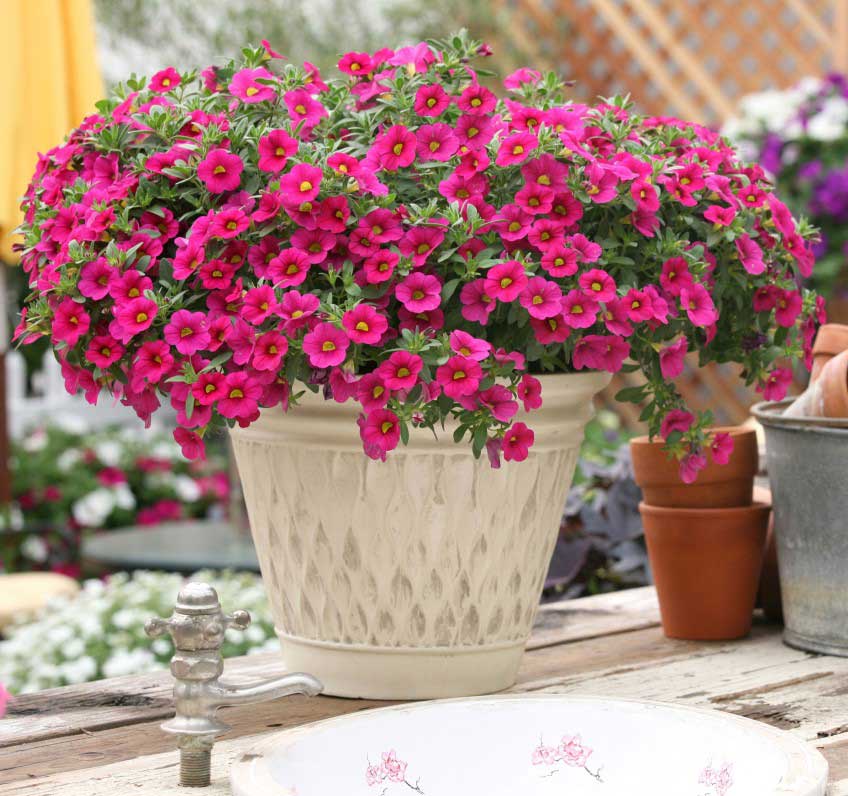
Million Bells Bouquet Brilliant Pink. Photo - Linda Ross
Quick colour
We pick a bunch of favourite summer annuals, some new and some old.
For decorating fun in the garden nothing beats a few punnets of annuals. These plants only last a season, but they generously colour gardens, courtyards
and balconies during their brief life. Whether it’s a patchwork of blossom you want, or a ribbon of colour along a border, something to fill a gap,
a dramatic hanging basket, a fringe of trim in front of shrubs, or simply a pot brimming with flowers, annuals offer the answer. You’ll find them lining
the shelves in the seedling section of your local nursery at a cost of just $3-$5 per punnet.
Just in
Petunias
No other annual flowers for as long, or comes in as many colours. This season is no different, with blooms in a rainbow of colours, black or white, single
or double, striped or spreading. New petunias are heat-tolerant and easy-care. They have cascading blooms ideal for hanging baskets or in containers
mixed with other annuals. We like the dramatic stripes of ‘Hot Lips’ (Ball) and the frilly, tie-dye flowers of ‘Harlequin’ (Oasis). In the single colour
ranges we love the Sun Spun series (Ball), particularly ‘Yellow’. They are great for hanging baskets as they are compact and free-flowering. Sun Spun
also comes in blue, silver, white, and burgundy. We suggest choosing one colour and repeating it through the garden and in containers. Petunias will
flower 6-8 weeks after planting from punnets. Plant between 25-30cm apart.
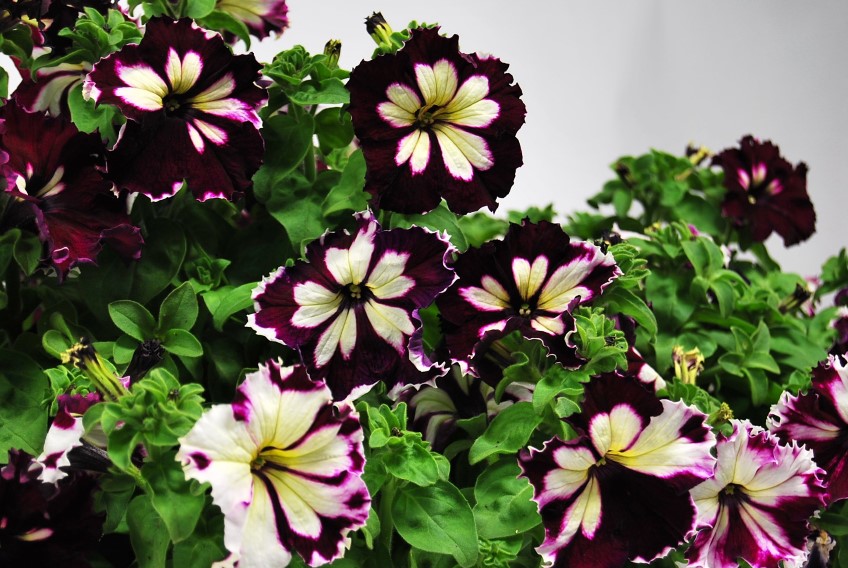
Harlequin petunias. Photo - Linda Ross
Calabroachoa
Easier to grow than to say (try it: Cala-bro-koa), this small and profuse flower excels in containers, hanging baskets and window boxes as the flower-starred
stems trail down. Dramatically coloured throats lure pollinators such as bees into the garden. Look out for Calibrachoa Bouquet ‘Brilliant Pink’ (Floriana).
Old favourites
Celosia
This annual is also known as cockscomb, for obvious reasons, and its tropical looks make it a great match near frangipani, bamboo, cordyline, ixora and
other tropical favourites. Its bright red, orange and yellow flowers come in either brain or plume shapes. Celosia hates the cold but when given warm
and sheltered conditions its dramatic licks of flame-like flowers can dazzle. Heights vary from 30-60cm, so choose smaller ones for the front of the
bed and taller ones for the back. Plant 20-30cm apart. Gardeners with some time for craft at Christmas will have some fun with a celosia Christmas
wreath (see link below).
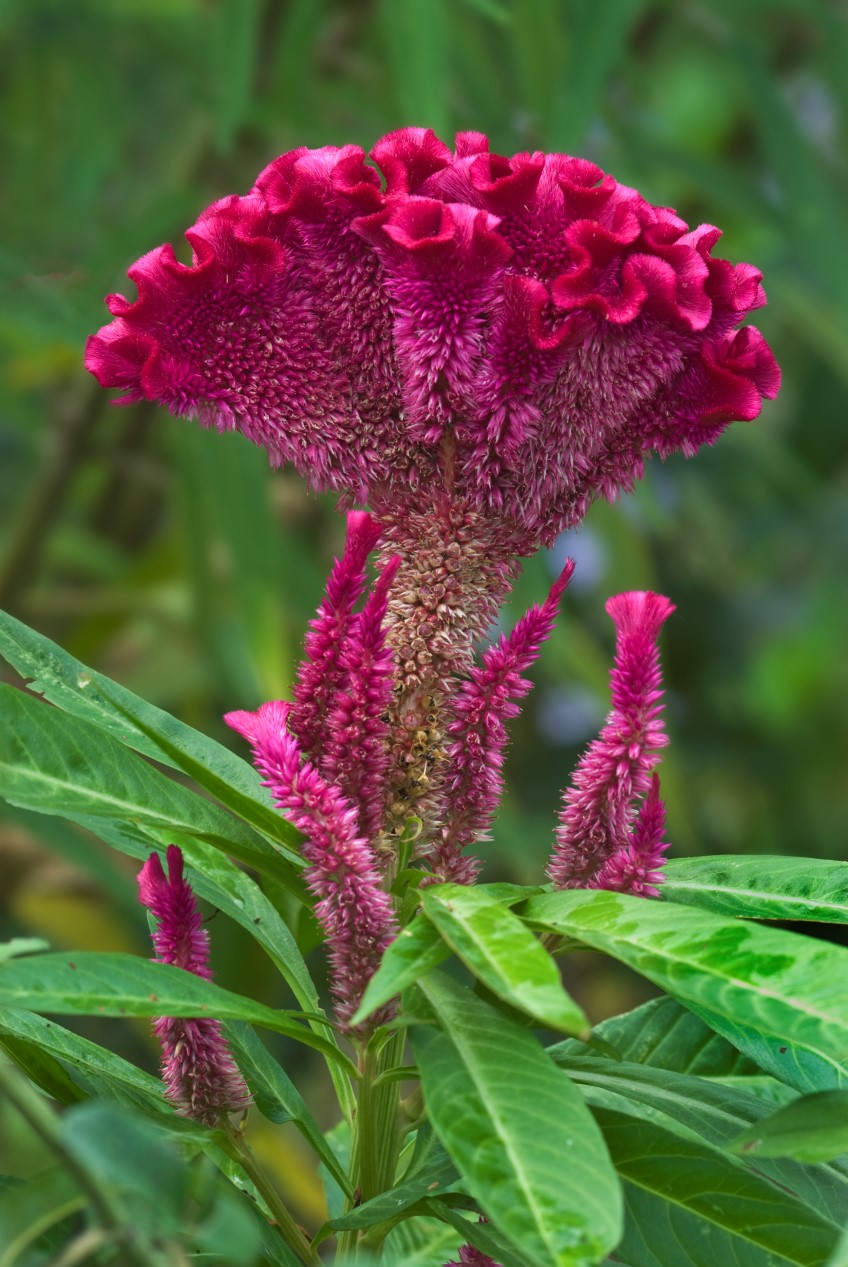
Photo - Gettyimages.com
Marigolds
Vegetable gardeners know the benefits of marigolds in the kitchen garden as an indicator of powdery mildew or as a prevention of nematodes. But outside
the kitchen garden they can also charm. We love ‘French Flame’ (Floriana) with its bicoloured blooms of maroon and gold. Marigolds need full sun. Plant
20-30cm apart. Expect flowers 8 weeks after planting seedlings.
Cleome
Even beginner gardeners have terrific success with these tall, graceful, spidery flowers. They are best at the back of the bed as they grow up to 1.5m
tall with huge heads made up of hundreds of flowers in the pink, white and lilac range. They love the heat and dry weather of summer. Lower leaves
will often fall at the end of the season. Disguise this by getting an early start on winter annuals such as pansies. Plants will often self-seed if
conditions are right. Grow from seed or seedling. Plant seedlings 30-60cm apart.
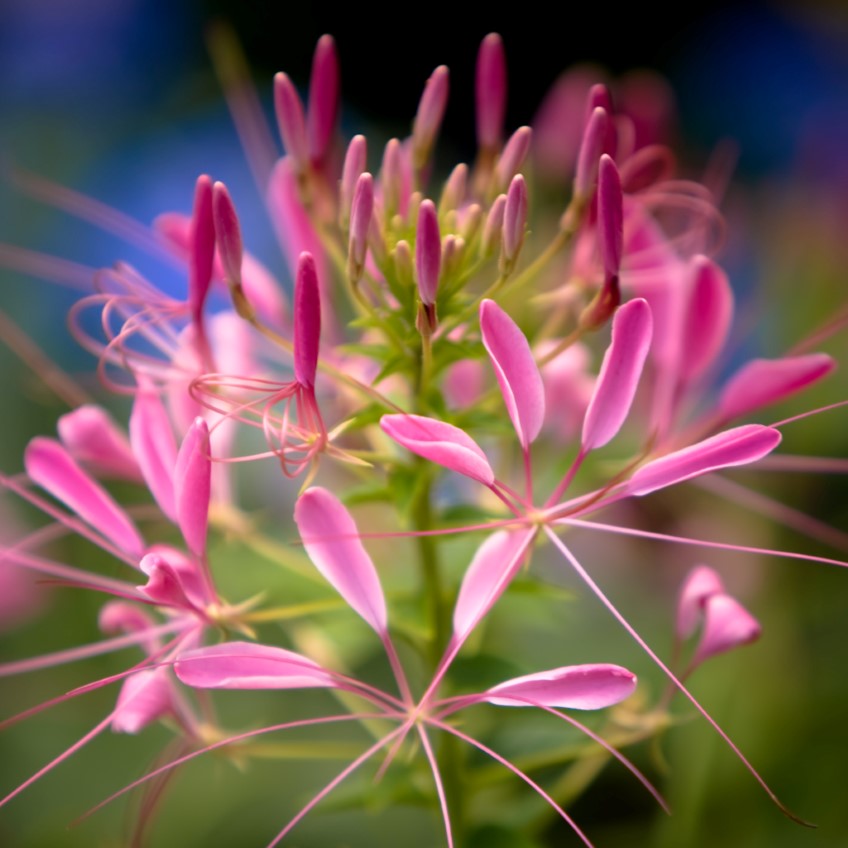
Photo - Derek Wood Photography/Gettyimages.com
Laurentia
This Australian native can be used as a summer annual and will flower 14 weeks after planting. Star-shaped mauve flowers adorn 30cm mounds. It looks
especially good planted in a large mass near kangaroo paw, eriostemon, zieria, flannel flowers, waratah and Geraldton wax. There are two tones
to choose from: ‘Pink Star’ and ‘Blue Star’ (Oasis). Plant 30cm apart.
Cornflowers
These simple and unpretentious flowers look best as a drift through a cottage garden. As well as the charm of that lovely blue, cornflowers offer easy
care flowers all summer long that are loved by butterflies and bees, and make great cut flowers. Want more? They’re also cheap, as they are grown from
seed. Just like sweet peas, cornflowers need to be cut constantly if you want them to flower all summer. Cut them just before they open fully – the
centre of the flower should still be dipped inwards slightly.
.jpg)
Photo - Gettyimages.com
5 tips for stunning annuals
1. Choose the right flower for your position. There are different annuals for sun, shade, dry and moist spots.
2. Time the flower display. You can expect a great show of flowers 8-12 weeks after planting summer annuals. Plan accordingly if you want maximum impact
for a special event.
3. Add water crystals, a sprinkle of blood and bone and controlled release fertiliser into the planting area.
4. Remove the first flowers to allow plant to spend energy bushing up before flowering. Pull off flowers as they finish to make way for new ones.
5. Feed, feed, feed! Annuals need fortnightly soluble fertiliser to keep the flowers coming
Sow what
These can be sown straight into the garden right now: marigold, cleome, nasturtium, and zinnia. Simply add some cow manure to the area and fluff up the
soil. Scatter the seeds over and lightly cover with fine soil or seed raising mix. Water gently. Germination should occur at 20 degrees and within
10-21 days. (Tiny seeds such as those of petunia, impatiens and coleus must be grown in pots indoors first and need warmth and light to germinate).
For bush garden enthusiasts, Bill Newman from Australian Wildflower Seeds assures me you can sow Sturt desert pea and everlasting daisies in Sydney this
spring as long as you use seed starter granules. Put a good pinch of them in a tea strainer and place that in the hot water when soaking the seeds.
You can expect flowers from these just 12 weeks after sowing.
4 great looks
1. Choose one colour and plant varieties of the same flower across the available tonal range. For instance, try lilac, purple, blue, blue-striped and pink-striped
petunias.
2. This bold combination features pink cleome, red ‘Bishop of Llandaff’ dahlia and ‘Bengal tiger’ canna lilies. You could also add gloriosa vine (from
bulbs) and a splash of red and orange celosia.
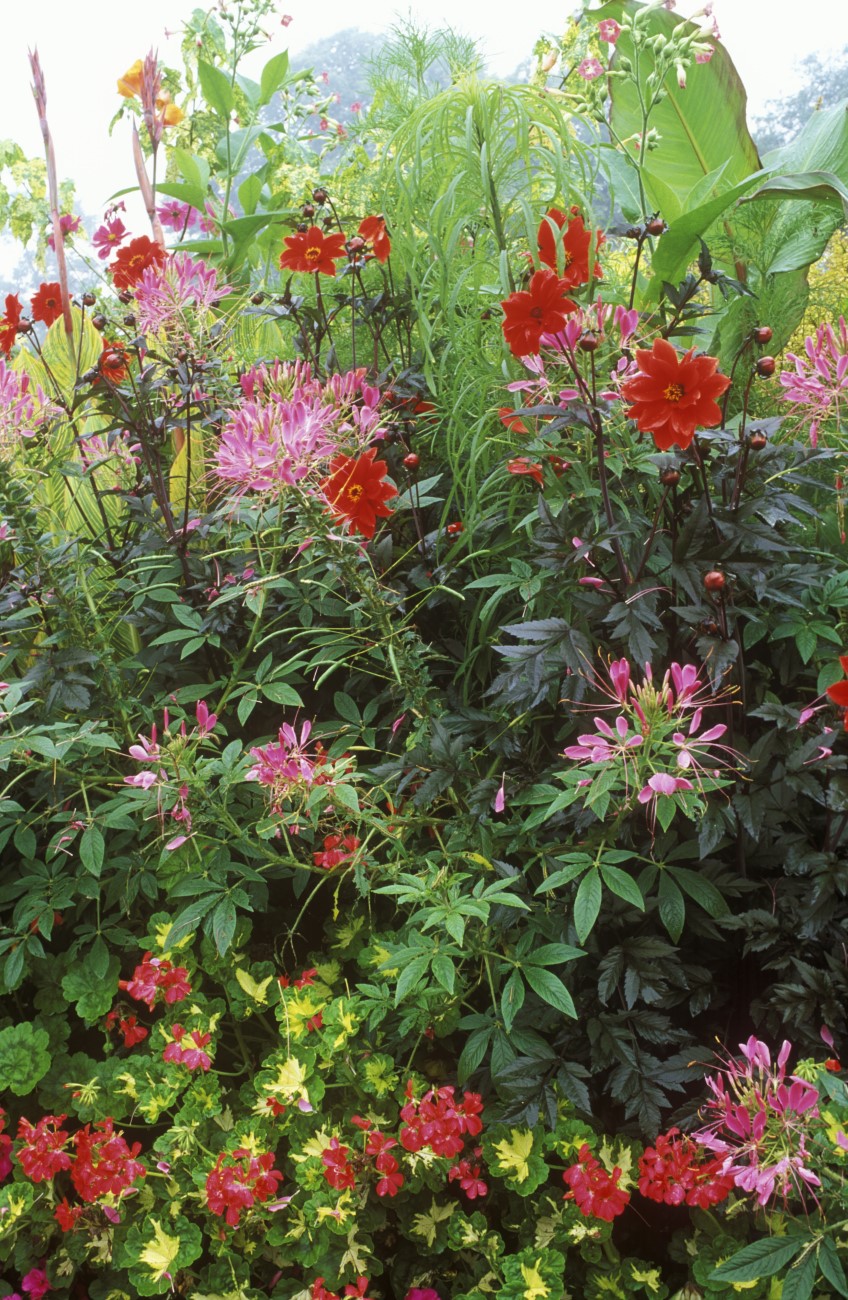
Photo - Mark Bolton/Gettyimages.com
3. Mass a mix of white flowering annuals such as seaside daisies, cleome, and petunia, with osteospermum, gaura and daisy.
4. Children will love painting their own birdhouse in bright colours to match this explosion of rudbeckia, zinnia, verbena and petunia.
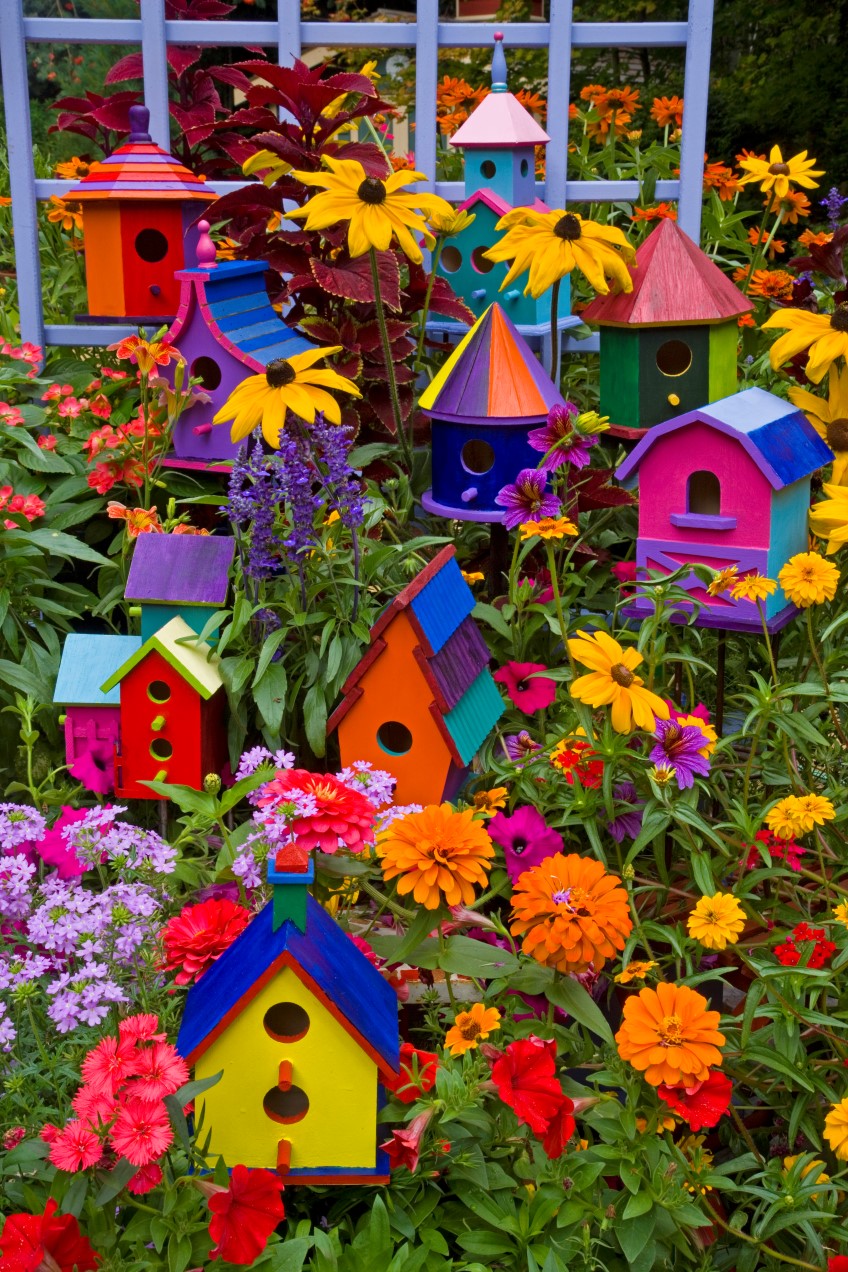
Photo - Gettyimages.com
Where to buy
Visit the seedling section of your local nursery.
Text: Linda Ross